Business analysis skills are helpful for any product person, even if you aren’t in an actual business analyst role. The ability to facilitate discussions; elicit information from customers, stakeholders, and users; and analyze that information to make decisions are critical to successful product work.
We’ve established an affiliate relationship with Bridging the Gap, a leading provider of virtual training to help people in the midst of their career learn or improve their business analysis skills. Laura Brandenburg, the founder of Bridging the Gap, has over a decade of experience helping people to start careers in business analysis, find more success in their current business analyst position, or find a new business analyst job.
While we help you apply business analysis skills to internal product work, we wanted to provide another source of help to improve your essential business analysis skills. These courses and templates from Bridging the Gap will help you do just that.
Business Analysis Skills
BA Essentials Master Class
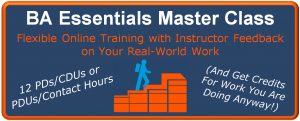 This self-paced virtual course explains the 8-step business analysis process that helps you to know exactly how to take the best possible business analysis approach to any type of internal product or business-change project, even if you find yourself in a new organization, new domain, and working with a new project team.
This self-paced virtual course explains the 8-step business analysis process that helps you to know exactly how to take the best possible business analysis approach to any type of internal product or business-change project, even if you find yourself in a new organization, new domain, and working with a new project team.
Crafting Better Requirements
 This 2-month hands-on coaching program helps you improve either your traditional or agile requirements. The Agile Track helps you expand your skills to include user stories, product backlogs, and other agile requirements techniques.
This 2-month hands-on coaching program helps you improve either your traditional or agile requirements. The Agile Track helps you expand your skills to include user stories, product backlogs, and other agile requirements techniques.
Business Analysis Techniques
Business Process Analysis
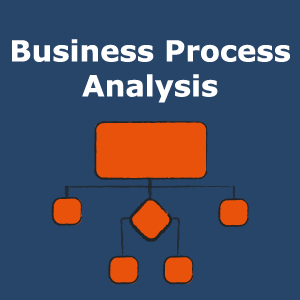 Business process analysis and improvement is one of the most universal business analysis techniques. You can use it to:
Business process analysis and improvement is one of the most universal business analysis techniques. You can use it to:
- Clarify your actual step-by-step workflow;
- Avoid building the wrong thing;
- Figure out what questions to ask when starting on a new project or domain.
Business process analysis is often the very first technique you’ll use when you start learning a new domain or analyze the scope of an initiative.
Business Process Analysis & Improvement is a live, virtual session that runs periodically throughout the year.
Data Modeling for Business Analysts
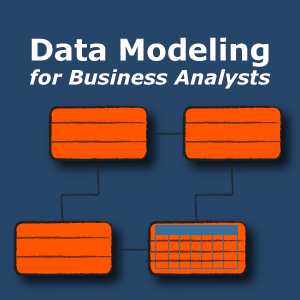 Data Modeling for Business Analysts includes core lessons covering all of the key data modeling techniques and the core concepts you need to know to successfully model data and build a shared understanding about your products data requirements. The course is very hands-on, and you’ll leave not just with theoretical knowledge but practical application creating these models in your own business or technical domain. You’ll learn 5 data modeling techniques: Glossary, Entity Relationship Diagram (ERD), Data Dictionary, System Context Diagram, and Data Map.
Data Modeling for Business Analysts includes core lessons covering all of the key data modeling techniques and the core concepts you need to know to successfully model data and build a shared understanding about your products data requirements. The course is very hands-on, and you’ll leave not just with theoretical knowledge but practical application creating these models in your own business or technical domain. You’ll learn 5 data modeling techniques: Glossary, Entity Relationship Diagram (ERD), Data Dictionary, System Context Diagram, and Data Map.
Use Cases and Wireframes
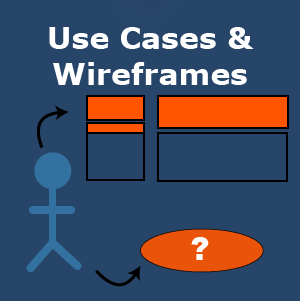 This is a 4-week, virtual course that walks you through exactly how to analyze and specify functional requirements by combining use cases and wireframes. When you go through the course, you’ll find that it’s easier than ever to understand what actually needs to happen on your software projects. You’ll receive the following lessons:
This is a 4-week, virtual course that walks you through exactly how to analyze and specify functional requirements by combining use cases and wireframes. When you go through the course, you’ll find that it’s easier than ever to understand what actually needs to happen on your software projects. You’ll receive the following lessons:
- How to Write a Use Case
- How to Create a Wireframe
- How to Make Sure a Use Case is Clear and Complete
- How to Apply Use Cases and Wireframes in Different Scenarios
- BONUS Lesson – Simulated Use Case Review Session
Each lesson contains a neatly formatted and edited full-text PDF transcript, along with an mp3 audio file so you can listen in on your commute. What’s more, you’ll receive templates, samples, swipe files, and quick reference guides to make it easy to apply what you are learning right away.
Toolkits and Templates
Business Analyst Template Toolkit
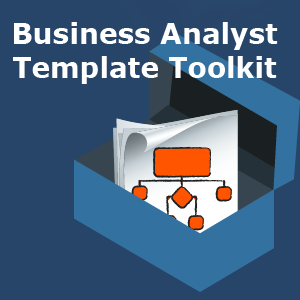 The Business Analyst Template Toolkit contains 12 annotated templates, corresponding work samples, and a guidebook to walk you through exactly how to use the toolkit to increase your business analysis effectiveness.
The Business Analyst Template Toolkit contains 12 annotated templates, corresponding work samples, and a guidebook to walk you through exactly how to use the toolkit to increase your business analysis effectiveness.
The templates included are: Business Process, Change Request, Data Feed Specification, Glossary Template, Issues List, Meeting Agenda, Meeting Notes, Requirements Development Plan, Scope Statement, Use Case Template, Use Case List and User Interface Specification.
Email Communication Templates
 The Email Communication Templates contains 32 simple, copy-and-paste email templates covering business analysis work scenarios that can be handled effectively via email. You’ll save time by using the templates as a starting point. What’s more, the methodical approach incorporated into the templates ensures you are using email in the most effective way.
The Email Communication Templates contains 32 simple, copy-and-paste email templates covering business analysis work scenarios that can be handled effectively via email. You’ll save time by using the templates as a starting point. What’s more, the methodical approach incorporated into the templates ensures you are using email in the most effective way.
Project Prioritization Organizer
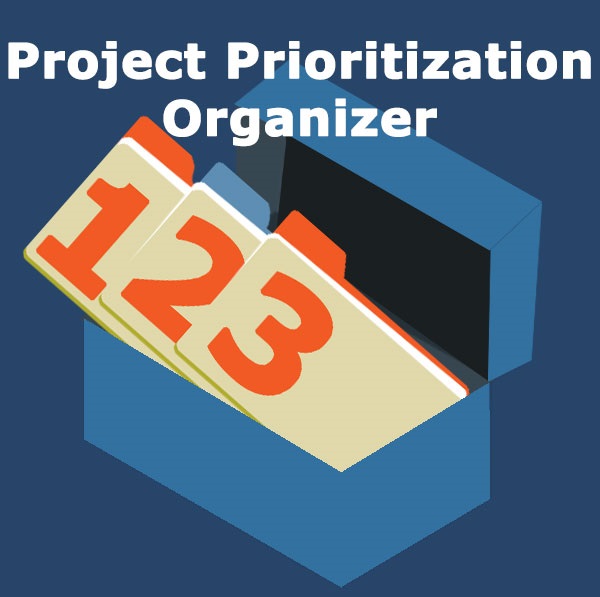 Use Project Prioritization Organizer to turn barely managed chaos into a nice, neat list of clearly prioritized projects. The Project Prioritization Organizer is a toolkit you can use to clearly prioritize products and initiatives in your portfolio.
Use Project Prioritization Organizer to turn barely managed chaos into a nice, neat list of clearly prioritized projects. The Project Prioritization Organizer is a toolkit you can use to clearly prioritize products and initiatives in your portfolio.
Requirements Discovery Checklist Pack
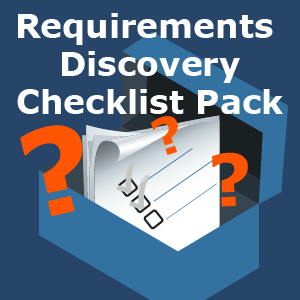 The Requirements Discovery Checklist Pack contains over 700 questions categorized and cross-referenced so you can prepare for your next elicitation session with a sense of ease and confidence. Complete with 18 checklists covering core business process areas and software features, the Requirements Discovery Checklist Pack is designed to help you think through the important questions you need to ask so you don’t overlook critical requirements (or feel unprepared for your upcoming requirements sessions). The Pack will also save you lots of time in preparing your meeting agendas and requirements deliverables.
The Requirements Discovery Checklist Pack contains over 700 questions categorized and cross-referenced so you can prepare for your next elicitation session with a sense of ease and confidence. Complete with 18 checklists covering core business process areas and software features, the Requirements Discovery Checklist Pack is designed to help you think through the important questions you need to ask so you don’t overlook critical requirements (or feel unprepared for your upcoming requirements sessions). The Pack will also save you lots of time in preparing your meeting agendas and requirements deliverables.
Visual Model Sample Pack
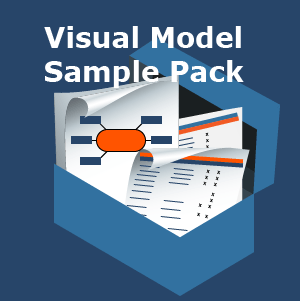 The Visual Model Sample Pack contains 22 real-world visual samples that cover everything from UML diagrams to whiteboard drawings, so you can easily incorporate more visuals into your requirements process, and get the process moving faster.
The Visual Model Sample Pack contains 22 real-world visual samples that cover everything from UML diagrams to whiteboard drawings, so you can easily incorporate more visuals into your requirements process, and get the process moving faster.
You’ll receive real BA work samples from Laura’s own personal archive. Each sample includes a snapshot of the actual visual that was included in documentation and presented to stakeholders along with the source file in the native format. (Only confidential or company-identifying information was edited out.)